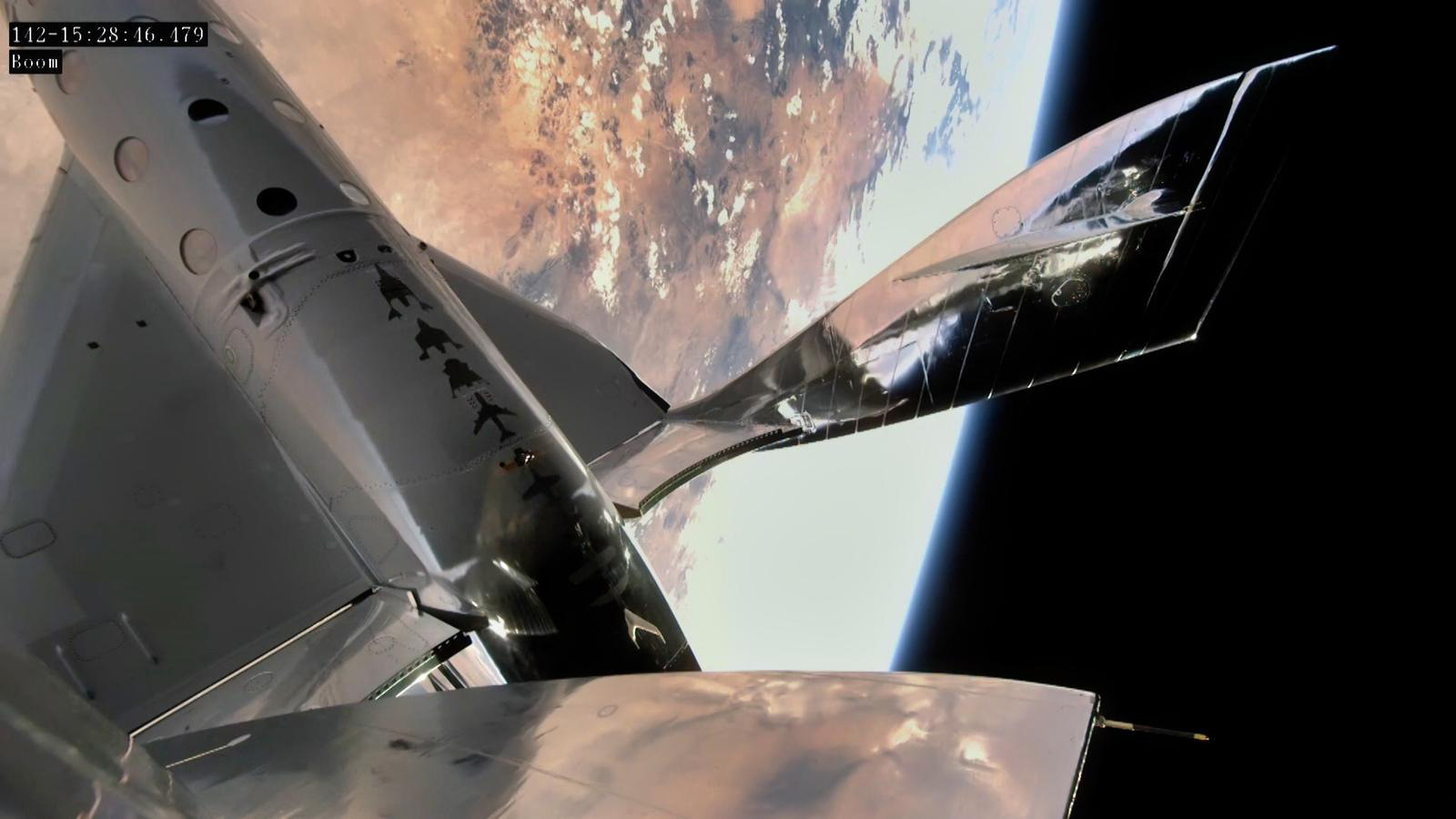As Virgin Galactic’s VSS Unity roared to the inner edge of space on May 22, APL technology was at work within. It was another successful flight for the JHU APL Integrated Universal Suborbital (JANUS) platform, a sensor designed to observe the conditions inside suborbital space vehicles.
For this flight, JANUS characterized the electromagnetic field environment inside Unity, and looked at the potential effects of strong external and internally generated fields on the spacecraft and its payloads.

It was JANUS’ second flight on a Virgin Galactic craft and eighth overall, having also flown on five Blue Origin and one Masten Space Systems craft. Aside from helping assess conditions for eventual passengers, said JANUS principal investigator Todd Smith, the data will enable payloads designed to make scientific observations of Earth’s magnetic field to cancel out interference from the spacecraft.
Most of the flights, including the latest, have been funded by NASA’s Flight Opportunities program. With the information about conditions inside the spacecraft, JANUS also studies the lower ionosphere encountered at suborbital flight altitudes — about 50-60 miles — and how it may impact the performance of the spacecraft and their onboard technologies.
With features such as power, data storage and ambient environment characterization, JANUS can be slotted into a range of missions — on a Blue Origin flight last October, for example, the researchers connected JANUS’ advanced GPS receiver to the New Shepard capsule’s antenna, enabling it to provide precise real-time payload position and velocity information along with atmospheric measurements.
“We learn more and more with each flight,” said Smith, of APL’s Space Exploration Sector. “We are developing a very capable instrument that is going to provide valuable information for scientists and instrument developers, as well as space pilots and passengers.”

Smith’s team at APL, which also includes Ryan Hacala, Erik Hohlfeld and Wes Edens, is helping to set a path for using commercial spacecraft — primarily designed for tourism — to gain low-cost access to space for research, instrument development, technology demonstrations and education. These new crewed and uncrewed vehicles typically travel to altitudes above 50 miles — just about 80 kilometers — at costs much lower and with higher frequency than dedicated research rockets.
Piloted by CJ Sturckow and Dave Mackay, VSS Unity achieved a speed of Mach 3 — about 2,300 miles per hour — after being released from its mothership, VMS Eve, and reached space at an altitude of 55.45 miles before gliding smoothly to a runway landing at Spaceport America in New Mexico.
Virgin Galactic’s goals for the flight included assessing several technical upgrades to its space vehicle, including methods to reduce electromagnetic interference, which Smith thinks JANUS might have been able to measure. It also evaluated elements of the customer cabin and tested livestream capabilities from the spaceship to the ground — and made New Mexico just the third state to launch people into space.
JANUS was one of three NASA Flight Opportunities-funded payloads aboard Unity. Learn more about NASA’s Flight Opportunities program.
Banner image: An image of Earth’s horizon as the Sun sets over the Pacific Ocean was taken by an Expedition 7 crewmember onboard the International Space Station. Anvil tops of thunderclouds are also visible. Image credit: NASA
Related Topics
For Media Inquiries
For all media inquiries, including permission to use images or video in our gallery, please contact:
Michael Buckley
All Media Resources

